
Ensure Your Generator is Ready When You Need It
Generators can be lifesavers, and you never know when you are going to need one. Whether you’re caught in an emergency situation, inconvenienced by a power outage, or simply need portable power for a job site, event, or camping ensure your generator is ready when you need it most with these QUICK TIPS from Harbor Freight Tools.
GENERATOR SELECTION
The first step of generator readiness is purchasing the best generator to meet your needs. It’s very important to pick a generator powerful enough to meet your demands. There are two main topics to consider in the selection process:
Power Demands
To determine the amount of power you’ll need for your generator, make a list of the main items you’ll be powering and the wattages required to power them. If you’re not sure, you can reference the chart below for help.
First, choose the device that has the highest starting watts. Write this number down. Next, add the running watts of all the devices you want to power. Write this number down. The total starting watts your generator needs is the sum of these two numbers.
It’s also a good idea to add a buffer of 30% to your total wattage to ensure you have sufficient capacity in case you add additional items to your list in the future or forgot to include them. Having to purchase a second unit or trade up to a larger unit in the future can be an inconvenience and will cost much more in the long run than simply buying more wattage up front. Consider total power needs, space, weight, and portability before purchasing.
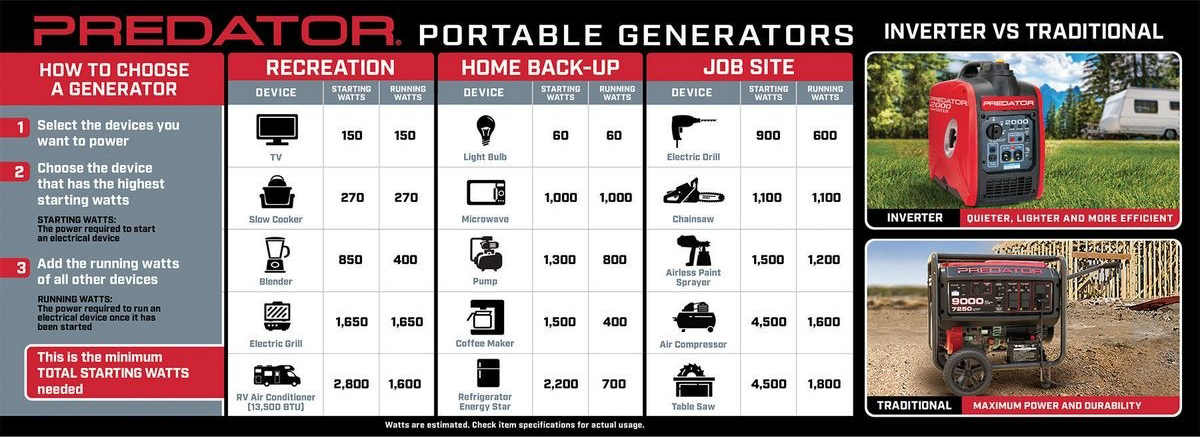
Generator Type – Traditional vs Inverter:
Consider whether you need a traditional generator versus an inverter. The main advantage to a traditional generator is their heavy duty steel frame and availability in high wattages, making them great for job sites and home backup. Whereas, inverters provide a quieter, lighter and more fuel-efficient stream of power which is beneficial for sensitive electronics such as computers, tablets, smart phones and TVs. This makes inverter generators a great choice for recreational applications such as RVs and camping, although they are growing in popularity for home back up as well. An inverter generator has additional electronics such as the inverter to produce this steadier and more efficient stream of electricity (inverter converts DC frequency back into AC before output).
Harbor Freight Tools has a great selection of dependable, affordable, and powerful heavy-duty generators and ultra-quiet inverter generators to meet every need. The new Predator® line has been updated and improved with even more runtime, greater durability and increased reliability. All Harbor Freight Tools generators and engines offer exceptional value, high-quality, and affordable prices.
USAGE
Practice makes perfect, and the saying holds true when it comes to operating your generator – the most important reason for testing is not only to ensure that your equipment works, but to make sure you are comfortable using it when the timing counts.
Be Prepared
Avoid being stuck in an emergency, on a job site, or at an event reading detailed instructions for the first time or scrambling for important parts and accessories. No matter what the reason it’s important that you AND your generator are ready. Allow yourself extra time for the first use and avoid the most common mistakes: lack of engine oil and improper use of the choke.
Unbox, setup and test your equipment in advance of when you need it. Thoroughly review all instructions as this will ensure you are not trying to read in the dark, or other unfavorable conditions such as inclement weather. We recommend running your generator on a level surface.
NEVER START A GENERATOR INDOORS OR IN AN ENCLOSED SPACE.
ALWAYS POSITION YOUR GENERATOR OUTSIDE – AT LEAST TWENTY FEET FROM YOUR HOME, OPEN DOORWAY, WINDOW OR PEOPLE.
This may mean you will need to run an extension cord through an open window or door, or contact a local electrician to install a transfer switch. Follow the detailed instructions to setup, start and test your generator. Remember to add oil in addition to fuel (unleaded gasoline) and fuel stabilizer. Once started, turn the switch or engine choke from “START” to “RUN.” Instructions may vary for different models but by adding oil and properly using the choke, you will have mastered the most common mistakes that make generators fail to start or function properly. Note, that for generators with an electric start feature, you will need to have a charged battery.
If possible, run your generator at least once a month, or every few months, in order to circulate oil throughout the engine and keep components lubricated.
If you plan on powering your entire house, you will need to contact a professional electrician to install a transfer switch. A transfer switch connects your generator to your circuit panel and allows you to run hard wired appliances such as overhead lights and HVAC systems. Most transfer switches also help you avoid overload by displaying wattage usage levels. Never try to back feed your house (meaning trying to power your home’s wiring by plugging the generator into a wall outlet).

Extension Cords:
Limit the length of your extension cord to only the length you need in order to prevent appliance damage. Always use a heavy-duty extension cord rated for outdoor use at least equal to the sum of the connected appliances (in watts or amps). Test the length prior to use. Again, you don’t want to be caught without power only to find out your extension cord is too short. If you must connect multiple appliances to an extension cord, use a surge protector with proper energy rating.
Storage:
Proper storage will prolong the life of your generator. Always store your generator on an empty tank, especially if storing for unplanned use longer than one month. Be sure to drain the fuel from the tank and fully bleed the fuel line and carburetor by running it dry until the engine stalls (for detailed instructions refer to your owner’s manual). If your carburetor has a drain petcock, wait for the engine to cool and drain it manually. Add fuel stabilizer to your gas cans in storage as bad fuel is one of the top reasons generators don’t start. Depending on where you live, there may be a fire code limiting how much gasoline may be stored in your home, garage or shed (typically 10 gallons or less), so while you definitely want spare fuel on hand, don’t be tempted to fill up too much. Also, fuel is heavy and gas tanks have limited capacity. Depending on the size of your generator, check out our 2 gallon gas can or 5 gallon Jerry gas can.
Switch out fuel in your storage cans at least every six months even if using fuel stabilizer. Over time fuel degrades and can lose combustibility due to oxidization.
Replacement Parts & Accessories:
Like any engine powered equipment, changing the oil is a major factor in maintaining reliable equipment. We recommend changing your generator’s oil at least once a year, or for frequent use, approximately every 100 hours of operation (see your owner’s manual for specifics of your model). We also recommend changing your spark plug and air filter at least every 200 hours of use or once per year, as ensuring the proper fuel-air mixture will help the engine run more efficiently and will extend the life of your generator. To keep your generator running smoothly check out our full line of generator parts and accessories.


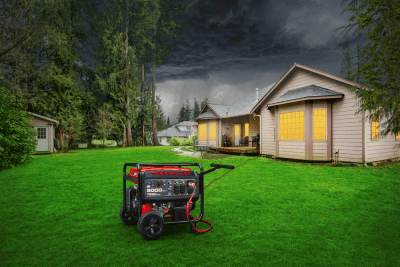
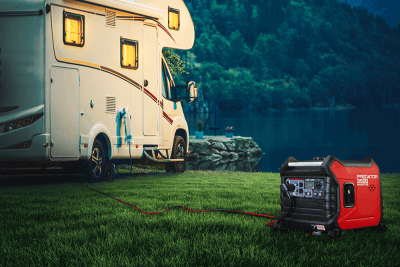
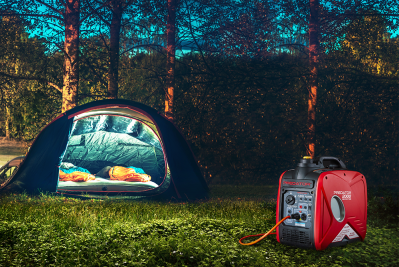
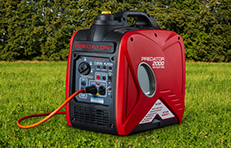
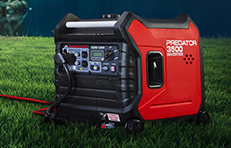
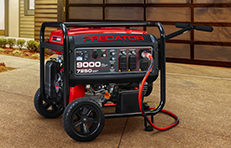
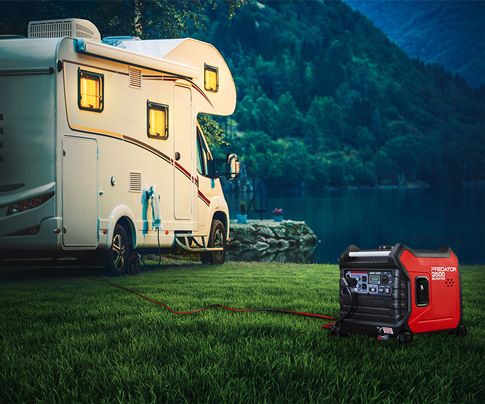
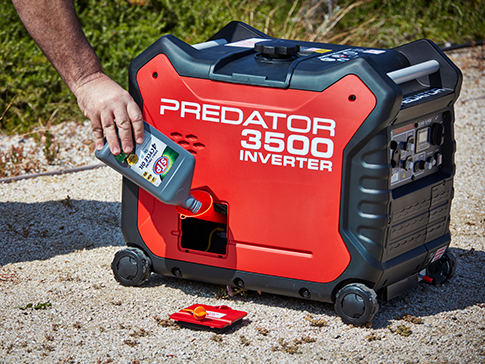
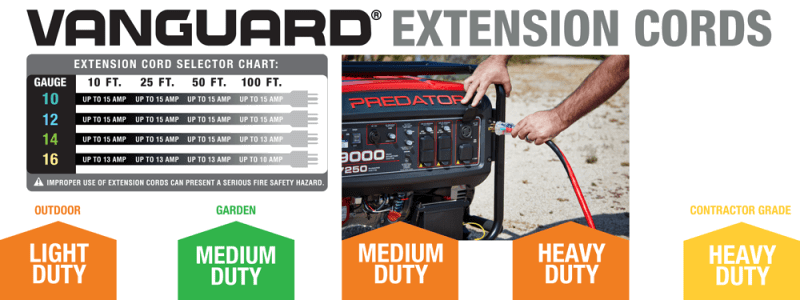























You must be logged in to post a comment.